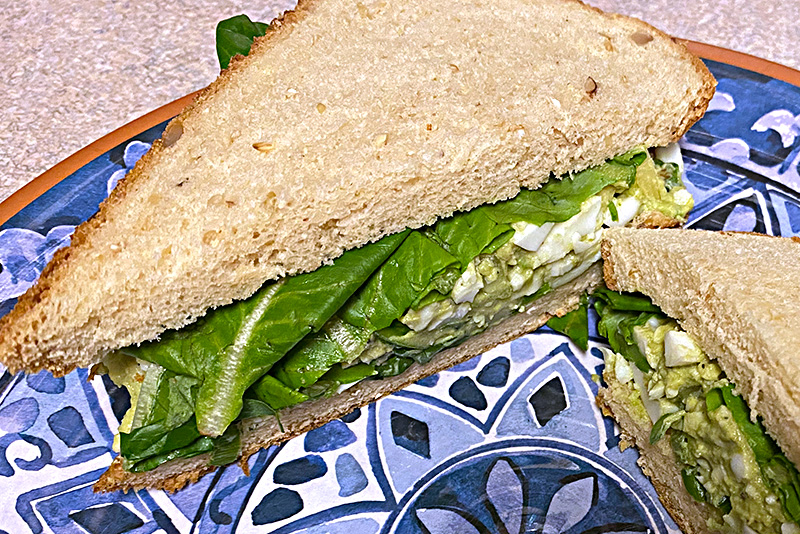Eating to Prevent GERD / Acid Reflux / Heartburn
Part 3: Lunch
[This is part 3 of a 5-part series on Eating to Prevent GERD.]

Like fast-food breakfasts, eating lunch out can be one of the main triggers for people with GERD. A greasy hamburger and fries with a carbonated soda is a meal full of reflux triggers. Be prepared by making your own lunch. This requires planning, especially if you are going to take your lunch to work with you.
The easiest way is to take leftovers from dinner. To help control GERD symptoms, a lunch portion should be about half of a leftover dinner portion.
If there are no leftovers, your best bet is to take a sandwich. Because portion size is so important when managing your reflux, it is best to have half of your sandwich at lunch time and save the other half for your afternoon snack. Below are some ideas for the GERD Sandwich Construction Kit. If you have had trouble with sandwiches in the past, the best plan is to begin with very simple sandwiches, adding different ingredients one at a time. This is the "add one" rule and it works great with any recipe.
For instance, start with whole wheat bread, low-fat mayonnaise and lean turkey the first day. If this works for you, add some lettuce the next day. After that change one ingredient in the kit each day. Over time this will help you identify which sandwich items trigger your reflux.
The GERD-Friendly Sandwich Construction Kit
Bread:
Choose whole grain breads. Check the nutrition information for breads that are lower in fat - a good goal is that a slice of bread should have less than 2 grams of fat. If you are working at losing weight to be healthier and control your reflux, using "light" breads can work well.
Fillers:
Because higher fat meals can trigger GERD, look for non-fat or very low-fat sliced meats like turkey, ham, roast beef and chicken. Purchase those with as little processing as possible. Start with meats that are not "smoked" or "cured". These can often be reflux triggers, as can meat that is spiced or glazed with honey or sugar.
Spreads:
1. Reduced fat mayonnaise. Look for mayonnaise that has less than 2 grams of fat per tablespoon.
2. Olive spread (sometimes called tapenade). This is available in the specialty foods section (or make your own GERD-Friendly Tapenade with this recipe). Check for a spread that has less than 2 grams of fat in a tablespoon. It doesn't take much to add a lot of flavor without adding a lot of fat or calories.
3. Mustards can be a problem for people with GERD. Try sweeter mustards like "honey mustard" spreads. Use sparingly and you may be able to add a lot of flavor to your lunch without the discomfort of reflux.
4. Creamy reduced-fat dressings make perfect spreads for sandwiches. Choose prepared dressings or recipes and avoid those that are spicier.
Toppings:
Lettuce, spinach and other greens are generally not something that provokes reflux. Remember the "add one" rule and try each different ingredient one at a time to help identify what might provoke your reflux.
The other traditional toppings like tomatoes, cucumbers, peppers, and onions will also need to be added carefully, using the "add one" rule. For many people the amount of tomato that they eat is key - some can tolerate a couple of slices on their sandwich, but not a whole tomato in a salad or tomato sauce.
Tummy Tips!
Making your own lunch is key to gaining control over your reflux symptoms, but if you have to choose a fast food restaurant, look for one that lets you build your own sandwich just like you would do at home with the Sandwich Construction Kit.
Start with a simple sandwich and add one new ingredient each day to help keep track of sandwich fixings that provoke your reflux.
Living the GERD/Acid Reflux/Heartburn-Free Life
Getting Started: GERD / Acid Reflux Home Page
Step 1: The GERD-Friendly Breakfast
Step 2: The Midmorning Snack
Step 3: The GERD-Friendly Lunch
Step 4: The Afternoon Snack
Step 5: The GERD-Friendly Dinner


